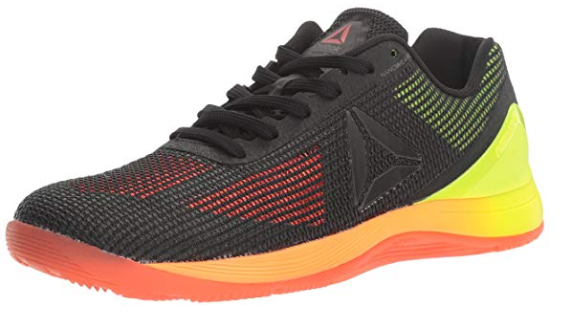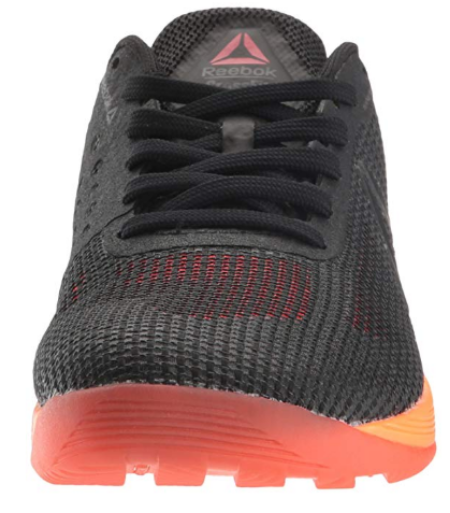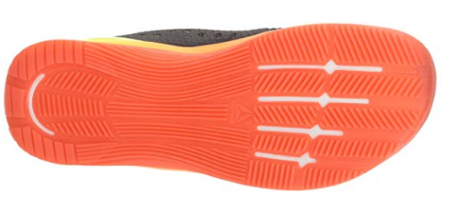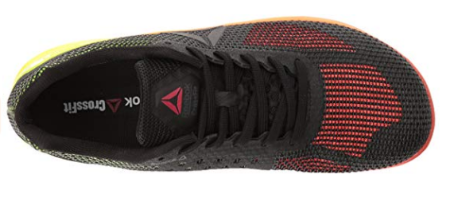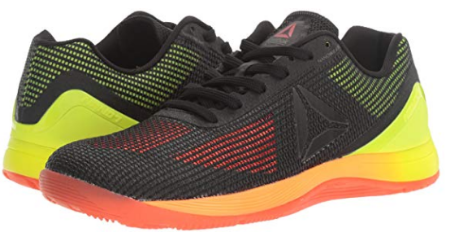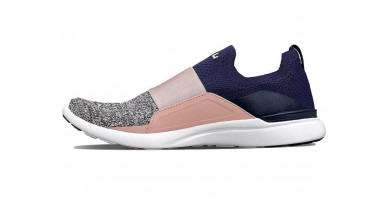Reebok Nano 7.0 Newly Revised and Updated
In 2011, Reebok became the official gear supplier to CrossFit, Inc., including the CrossFit Games. If you purchase a branded CrossFit burnout tank, tee-shirt, headband, or other pieces of gear, it will also have the Reebok logo on it. 2011 was also the year Reebok introduced the Nano 1.0, a cross-training shoe made for WODs and CrossFitters. The company has retweaked the design periodically ever since. The Nano 9 released in June 2019.
Today, we will look at the Reebok Nano 7. Though it is missing some of the 9’s innovations, the Nano 7.0 is by no means outdated and will still help you power through short runs, calisthenics, plyo box jumps, Olympic lifts, rope jumping, and almost any other gym activity you can think of. You can find the Nano 7.0 on the Reebok website, or most online or brick and mortar athletic shoe suppliers.
So what did Reebok change and upgrade over the Nano 6.0? Read on for a deep dive, but one of the key differences is in the outer protective shell. The Nano 6.0 used Kevlar. Reebok has replaced this with its proprietary Nanoweave. It makes the shoe durable, breathable, and flexible all over, not just in the midfoot. The weave also helps with grip when you do things like rock or rope climbing. You will also find more overall support in the Nano 7.0, and the TPU heel cup is external instead of being inside the shoe.
Extra rigid immobility for feet
Nanoweave outer shell provides superior protection
Outer heel cup supports heel, keeps shoe structure
Laces can be tucked away and will stay tied
Ridges and contours insole for shock absorption
Not suitable for runs greater than 2 or 3 miles
Motion Control
There aren't any straps, velcro, BOA discs, tongue pads or anything else to back up the laces. But reviewers concur that the laces pull tight and will not work their way loose. We would have liked to see tongue padding, to protect from pressure points, but that's not enough of a problem to be a deal-breaker.
Though lifting support is strong, and your feet won't slip or take the full brunt of a box jump or barbell squat, we found that the stability is less during pivoting movements. You could play a game of backyard soccer or basketball with no problem. But a more serious game, that has you running, jumping, turning, stopping, and changing direction constantly, would be hard with the Nano 7.0. You could back it up with an ankle wrap, though, and the wrap won't interfere with the shoe's fit.
Finally, the TPU plastic heel cup on the outside of the shoe adds to stability and motion control. TPU is a strong, practically heatproof polymer that helps stabilize your heel without adding weight or limiting movement.
Durability
Comfort
Materials
The Nanoweave upper shell is seamless. There's no risk of abrasion, friction, or fraying. The weave is also flexible and breathable. It offers extra protection and adds to the overall life of the shoe.
Inside the shoe, Reebok placed a molded midsole backed by a sockliner. The midsole is CMEVA, or compression molded ethylene-vinyl acetate foam. A block of foam is compressed into a mold that gives the midsole (and outsole) its distinctive shape. When heat is applied, the foam block expands and takes on the shape of the mold. The result is a custom-shaped, ridged, contoured shape that holds up over time and is ultra-resilient. The sockliner aids in snugging the foot.
The bottom part of the outsole is abrasion resistant high impact rubber. Though it's not the most flexible, the rubber will absorb the impact of even the most strenuous activity, keeping your feet pain free and letting you move on to the next part of your circuit. Though admittedly not the most comfortable shoes, Reebok made clever use of materials with the Nano 7.0. The result is a shoe that will go the distance and not ever let you down.
Style
The cool factor starts with the outsole. The forefoot is divided into five ridged sections, bordered by a round perimeter ridge with a pronounced side foot curve. It looks fast and stable. The midsole is chunky enough that its color frames the whole outside of this shoe. One of our favorites is the orange midsole, which bleeds, ombre style, into the bright yellow outside heel cup. You can see the elevated heel when you hold the shoe and examine it.
The Nanoweave gives the whole outer and upper a look like flexible chain mail, something that will let you move while protecting you from any intrusions. The laces lock tightly over the thin tongue, and the entire shoe looks more like an extension of your foot than an additional tool. In a change from tradition, the Reebok logo is more prominent than the CrossFit logo. The Nano has Crossfit right in the full name, but the shoe isn't just for WOD devotees. Anyone who wants extra stability and superior protection during their activity should try on a pair. Reebok shrunk the CrossFit branding to reflect the universality of their product.
Flexibility
But we know you probably aren't here looking for lifting shoes. You want something versatile that will let you lift, but also support you during cross-training activities. You want a shoe you can wear for a grocery run on the way back from the gym, without carrying a pair of old beater sneaks to change into. The Nano 7.0 can do that for you. But though it's not for lifting, the Nano 7.0 is like a lifter in its lack of flexibility. It won't pinch your feet, or crowd your toes together, or cause pain when you stand in your pair for too long. But it also just plain doesn't have the twisty, bendy sole or springy arch that you'd look for in a runner. As long as you are aware of that, and not looking to jump straight from lifting into outdoor cardio, you and the Nano 7.0 will get along just fine. The Nano 9, the latest and greatest at the time of this writing, does have a runner-friendly split sole if that is something you are after.
The Final Word
But also like creatine, the Nano 7.0 is not suited to more sustained strength or endurance training. You may be able to run a 5K in these, but you'd be better off and have less post-run soreness with a pair of dedicated running shoes. The Nano 7.0 does not have the supportive or flexible sole that you need for longer runs. It is built for sprints or intervals where the easy interval includes walking.
Even more than sprints, though, the Nano 7.0 is made for lifting. The heel is supportive, without excess padding, and helps lock your feet in place. The heel is slightly elevated, helping with a range of motion for barbell squats. You can use the Nano 7.0 for farmer carries, but you may find the sole and heel a bit stiff for this purpose. Laces fit tightly, and usually won’t cause a problem, but the nonpadded tongue doesn’t provide a lot of lace tension protection. The shoe has excellent traction, both on the outsole and upper, and the Nanoweave protects against scuffing and tearing.
The wide toe box rounds out the features that suit the Nano 7.0 so much to lifting. You are able to spread your toes, making a stable and solid foundation. The shoe is breathable, with mesh and weave synthetic uppers to let air circulate. If you want a supportive shoe that is lightweight enough to help you forget you have it on, and you aren’t looking to run more than three miles or so at a time, the Reebok Nano 7.0 will make you feel right at home.

